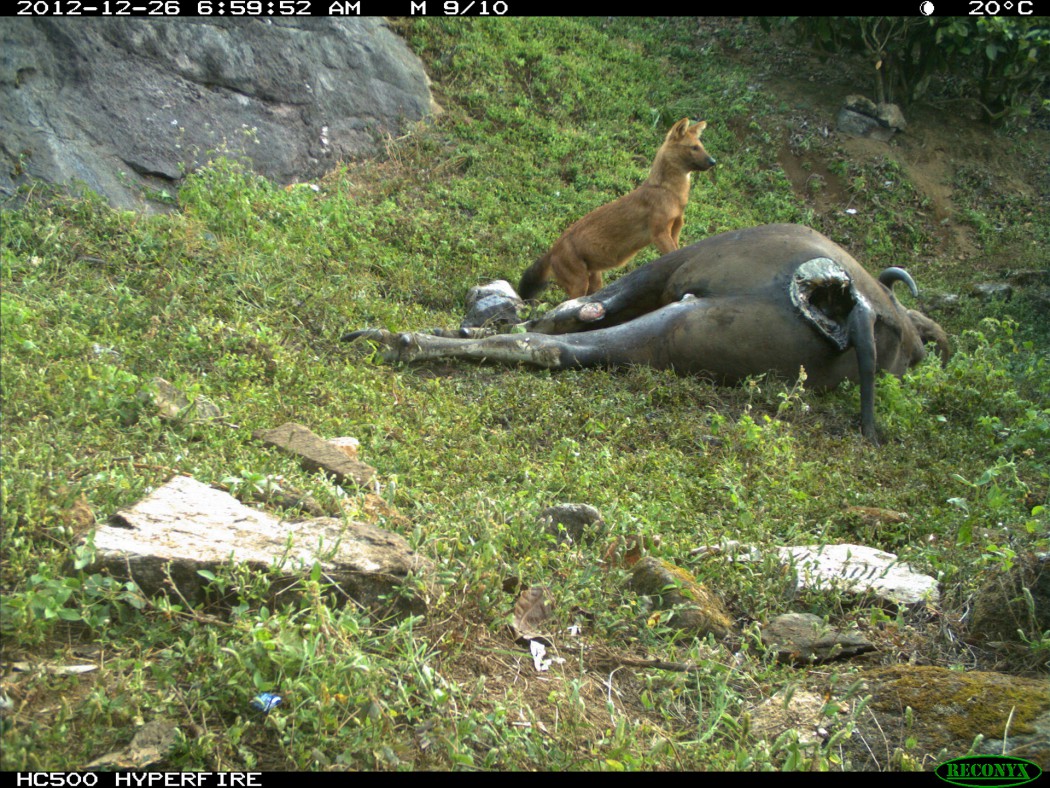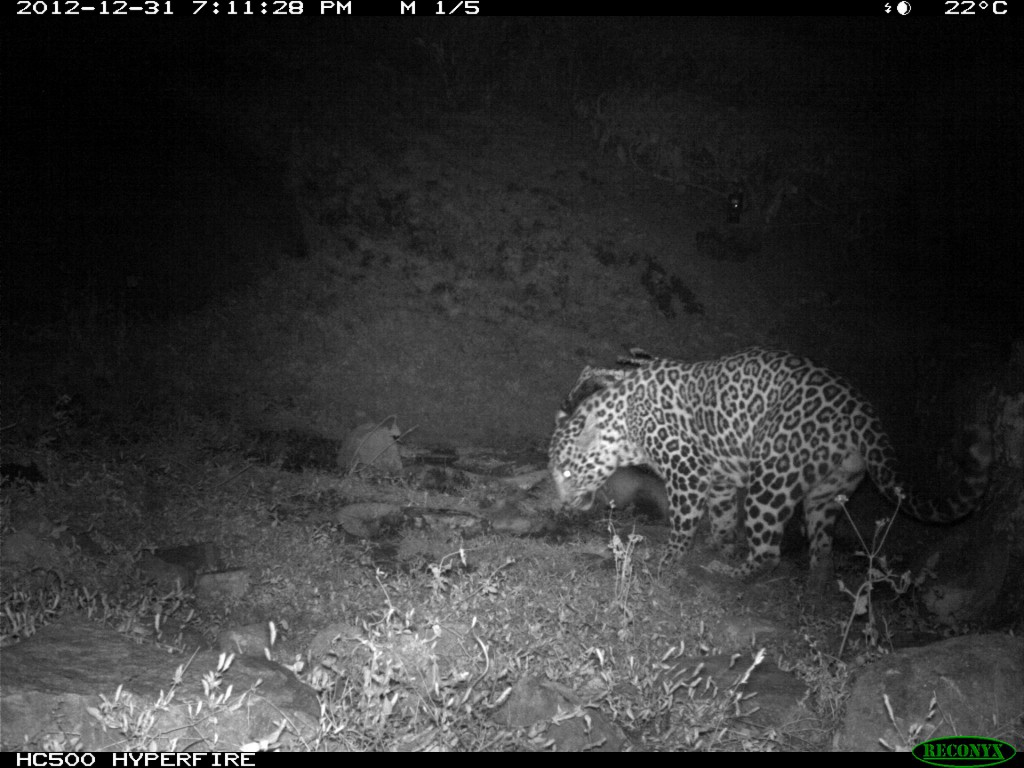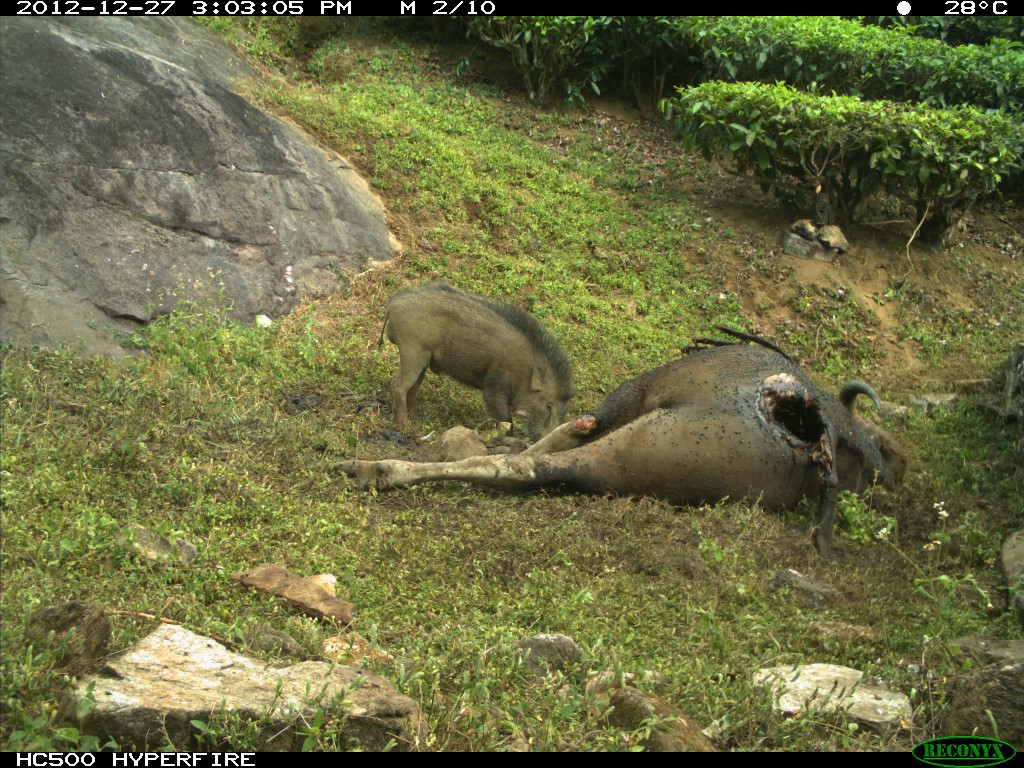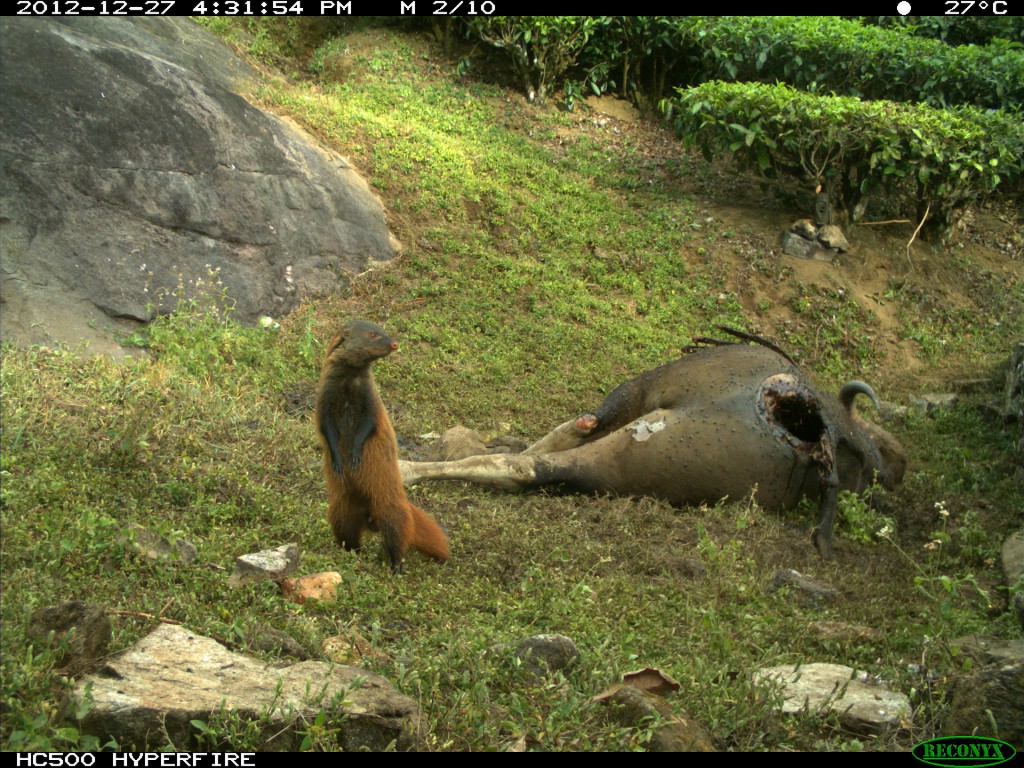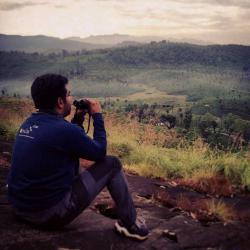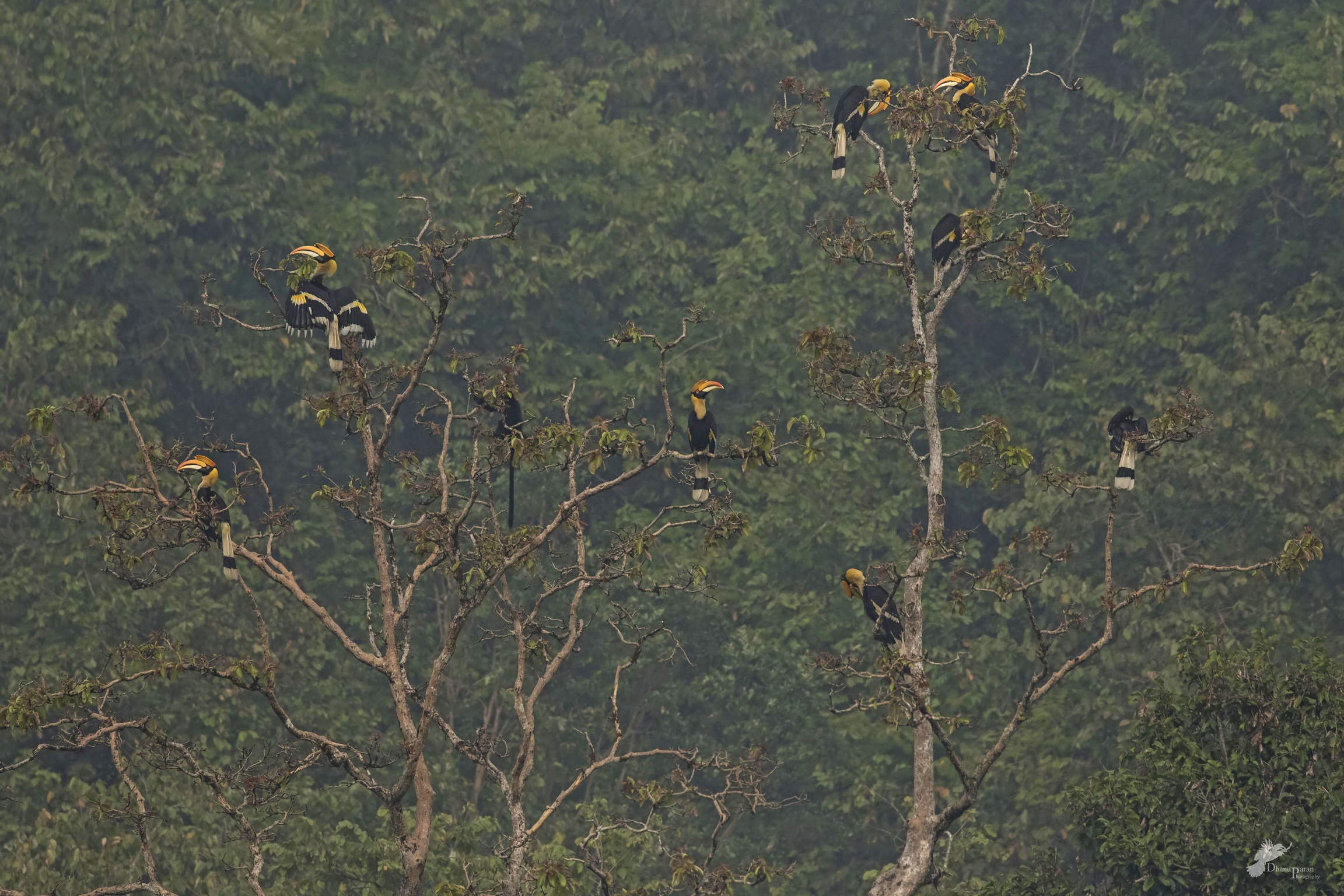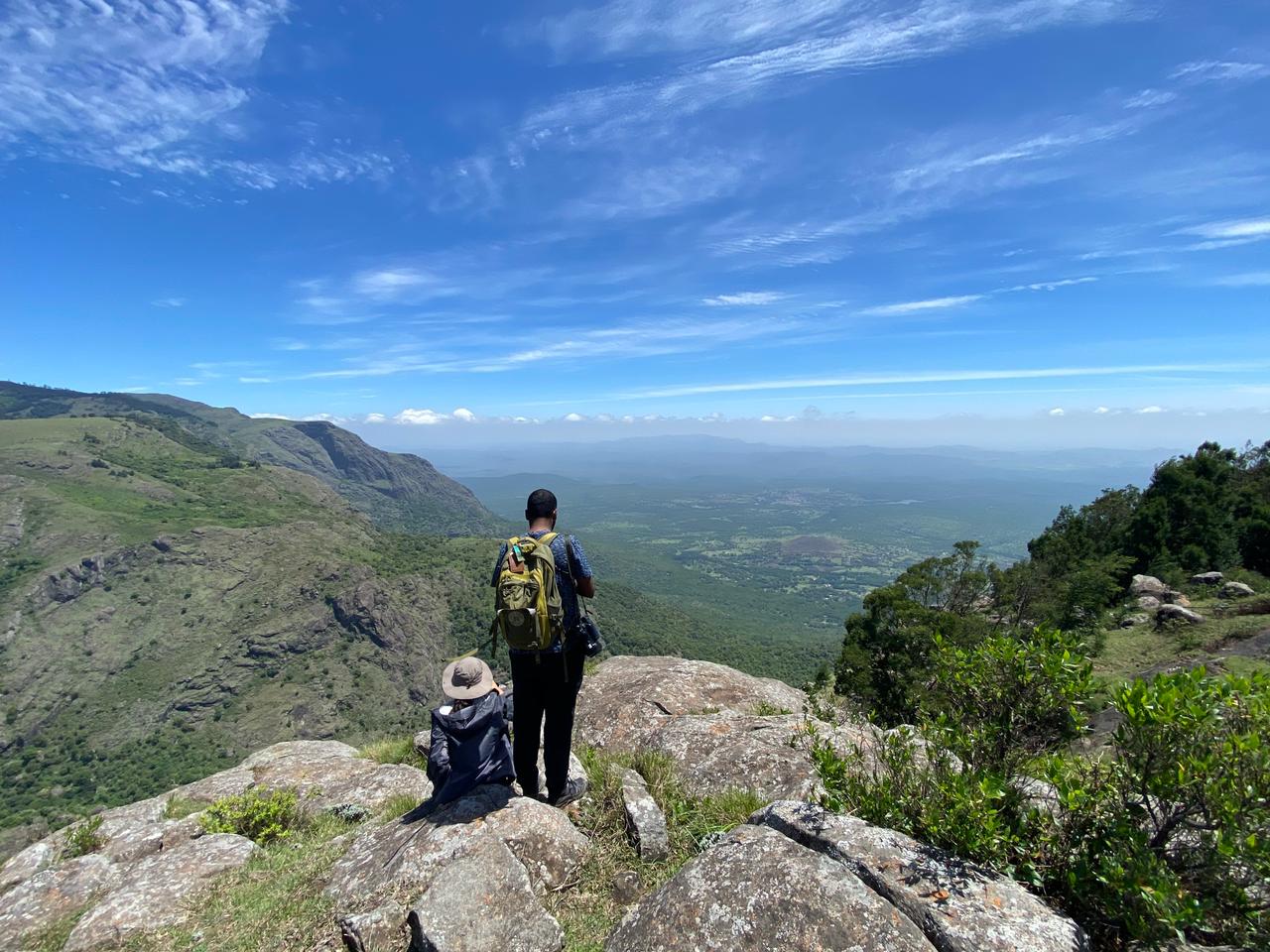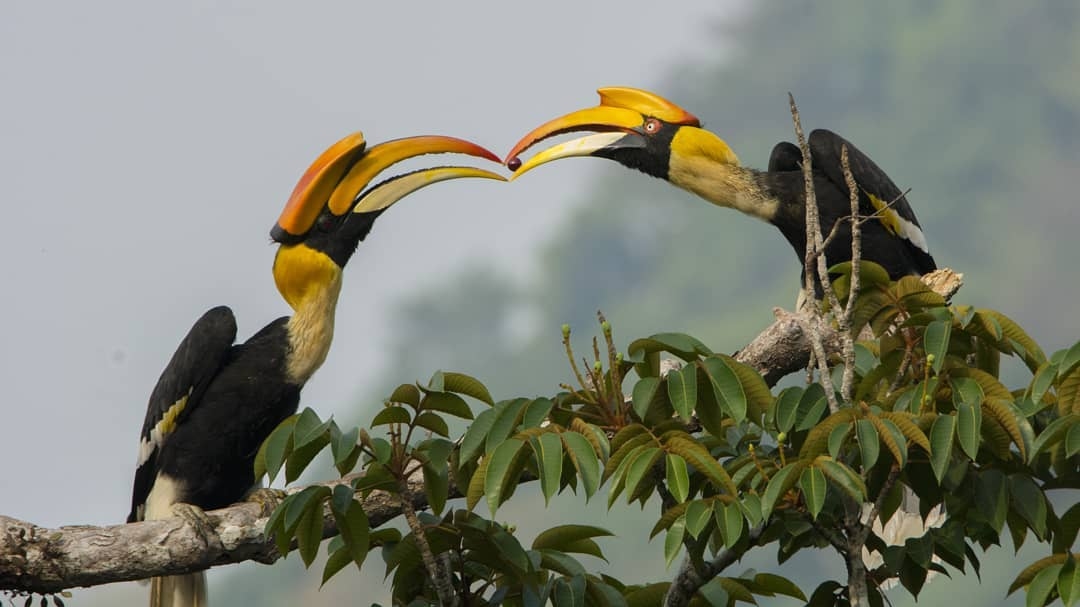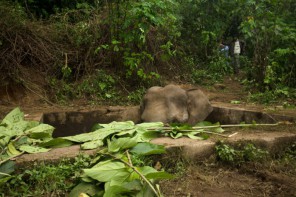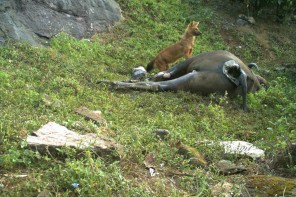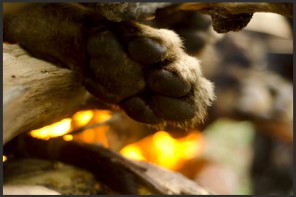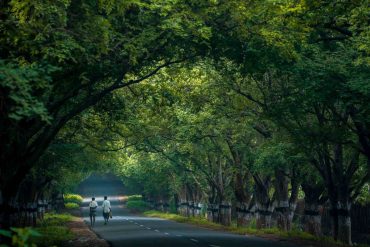Nothing in nature goes to waste. This was what we documented by setting up a camera-trap at the carcass of a dead gaur.
On 23 December 2012, the staff of the Tamil Nadu Forest Department found a dead young adult gaur on the boundary of the Anamalai Tiger Reserve in a tea plantation. In the past, the practice would have been to either bury or burn the carcass. This time, however, we were all curious to see what would happen if the carcass was left to nature. Therefore, with the support of the Tamil Nadu Forest Department and the plantation company (Parry Agro Industries Ltd), we set up a Reconyx HC 500 camera-trap to record the process of disintegration of the gaur when left undisturbed in the human-dominated landscape. We set up the camera-trap on 23 December 2012 and let it run till 7 January 2013.
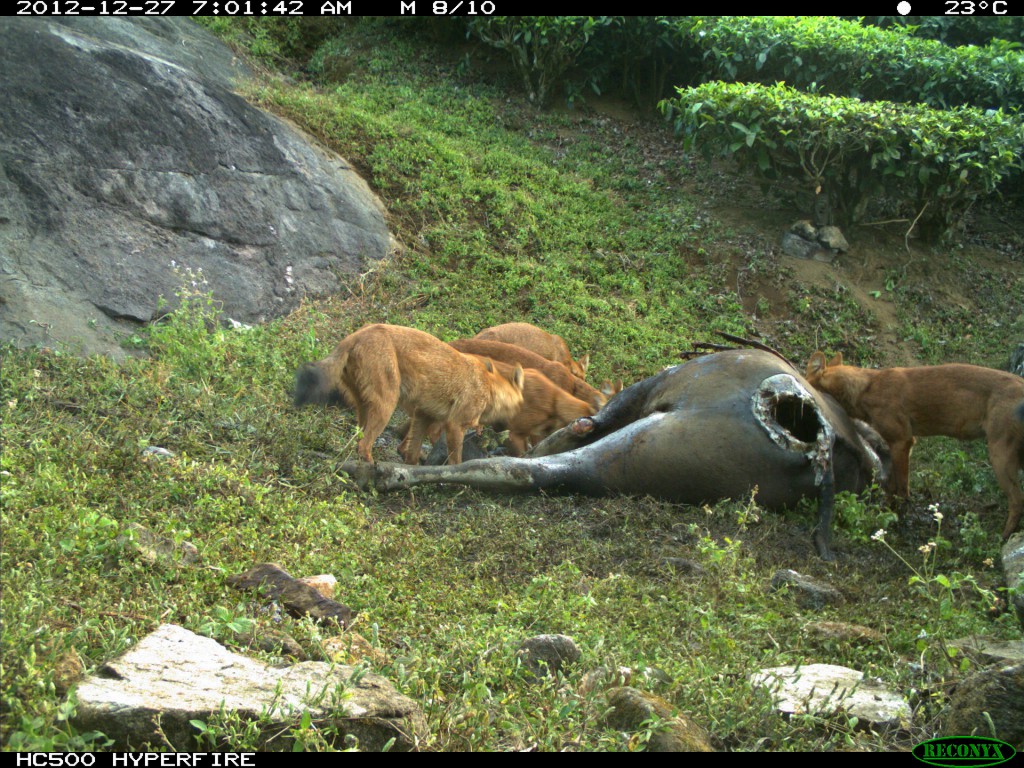
On the first two days, we did not have any captures on the camera-trap and the body of the gaur began to swell and decompose. Then, from the second night onwards, the action began. A time-lapse video, pieced together from 20,345 images taken by the camera-trap over the 15-day period, records how a variety of mammals, birds, and insects consume the remains of the gaur.
This is a stunning illustration of how natural processes of decomposition, scavenging, and disintegration operate when a carcass of an animal like the gaur is left undisturbed, even in a landscape of tea plantations. It goes to show how life and death are interconnected in the dynamics of prey and predator, carcass and scavenger, in the communities in nature, of which we too form a part.
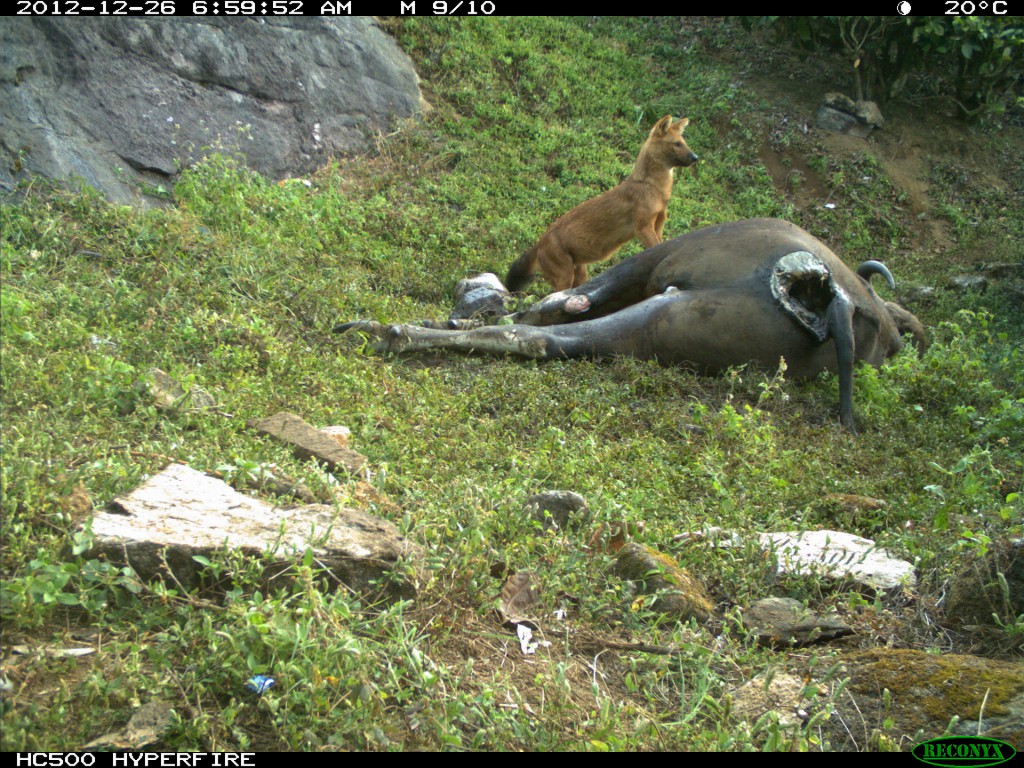
It is incredible the number of creatures that benefit from even one dead animal. In a landscape like Valparai where people and wildlife share resources, it is very essential to adopt certain practices that will benefit the wildlife we live with. This can contribute to bringing down instances of attacks on livestocks. Letting wildlife feed on their prey will reduce their need to hunt again and as you can see a whole lot of wildlife is benefited from this.
You can watch the video at this link :
https://www.youtube.com/watch?v=XTf4osMDwss
The author is a photographer and naturalist based out of Bangalore and is currently working with Nature Conservation Foundation (NCF) on resolving Human-Elephant conflict in the Anamalai Hills, Tamil Nadu.

